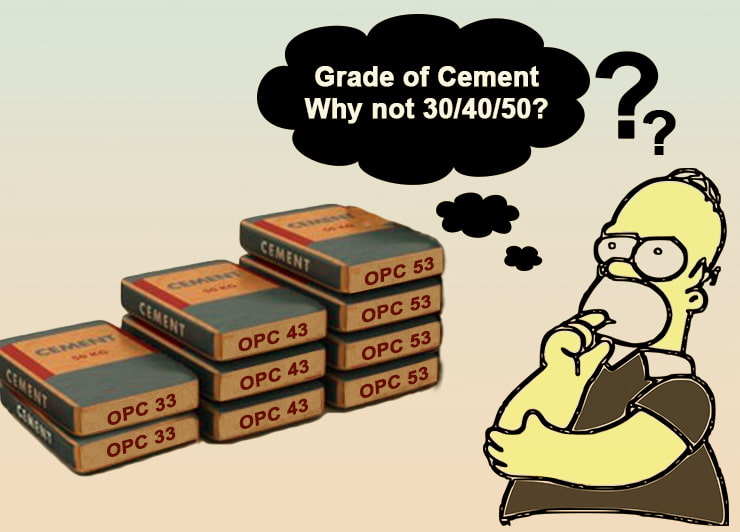
Queryasked by N.N. Chaudhari
Why 33/43/53 Grade of Cement? Why Not 30/40/50?
Solutionby Gharpedia
Grade of Cement
By the grade of cement as 33/43/53, the values 33/43/53 indicate the compressive strength of cement cube in Mpa (N/mm2) after 28 days of curing, where cement mould size is 7.06 cm*7.06 cm*7.06 cm. However, it would be good to understand the logic and basis of arriving at such values. Please note that these are not constant values. These 33/43/53 values are arbitrary and empirical values and they will keep on changing. Empirical means, these values are chosen after numbers of the experiments which are reliable and have been arrived at after statical analysis.

Also Read: Tests to Check the Compressive Strength of Cement
These values are supposed to change which means that there is no one value for compressive strength of cement like the density or specific gravity. There are many reasons due to which these values will change. i.e.
- If the size of the cubes is changed, i.e. if the cube size increased or decreased these values are supposed to change.
- If the shape of the specimens is changed,
- Even when the methods of testing are changed,
- If days of curing are changed i.e. if the cube is tested at 15 days or say as 45 days, the strength will change.
These empirical values are derived after conducting numbers of experiments according to the specified methods and equipment based on many prevalences. After that, they have been standardized.
Also Read: Field vs Laboratory Testing of Cement
These values are based on certain basic minimum requirements of compressive strength for concrete or mortar. They are based on normal and general minimum strength required of concrete or mortar for which a particular minimum compressive strength of cement is also needed. 33/43/53 grade cement is similar in chemical composition but different in the grinding process. For the higher grades, cement is ground much finer during the final stages of the grinding work, which imparts more durability and strength to the cement. Various experimental methods are described in standard guidelines. These standard guidelines also vary from nation to nation and different for every material. Standards i.e. different guidelines for specification are also available for different grades of cement like,
- IS 269:1989 for 33 grade, ordinary portland cement.
- IS 8112: 2013 for 43 grade, ordinary portland cement.
- IS 12269: 2013 for 53 grade, ordinary portland cement.
Also Read: Why do We Use the Portland Cement?
Standardization of grade is needed for maintaining the uniformity and making operations smooth all over the nation. It also gives the idea about which types of cement should be used for a particular purpose and how much cement is required to achieve the desired strength of concrete/mortar. Summering up, there is no particular reason for giving these particular number for a grade of cement. It was perhaps, the engineer’s judgement or choice to select the value which could have varied to some extent here or there.
Also Read:
Does the Shade of Cement Affect the Quality or the Strength?
Which is the Best Cement for House Construction?
Things to Keep in Mind Before Purchasing Cement
Difference Between Concrete and Cement
Did you find this helpful?